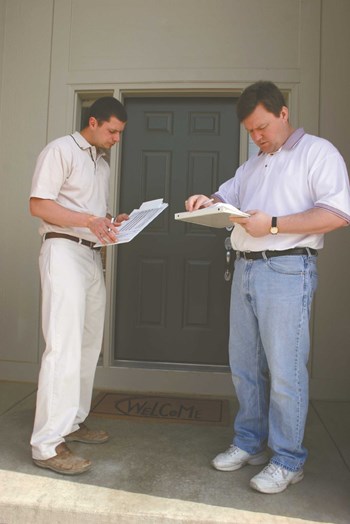
So, did your building comply with the new benchmarking requirements that were a part of Mayor Michael R. Bloomberg’s Greener, Greater Buildings Plan? Local Law 84, new legislation passed in 2009, required all of the city’s private buildings of over 50,000 square feet to obtain benchmarking and energy audits by an August 1, 2011 deadline. That includes most co-op and condo buildings.
“At first these laws seem ominous because there is a cost to having these studies done, but they were designed to give you information that allows you to make cost effective choices and save money,” says Kate Grossman, chief operating officer of New York City-based Greenwich Energy Solutions. “None of the laws force you to do anything—and that’s important for people to understand. Once people see the savings possibilities, they will just want to do these things.”
PlaNYC is essentially an eco-friendly strategic plan aimed at sustainability for New York City. PlaNYC sets a goal of achieving a 30 percent reduction in New York City’s annual greenhouse gas emissions below 2005 levels by 2030. Bloomberg’s plan also includes a revised New York City energy code that will mandate the use of newer, more efficient code compliant equipment when buildings are undergoing renovations, mandatory lighting upgrades for large commercial buildings over the next 15 years, retro-commissioning, green workforce development training to create thousands of jobs, and assistance for financing green upgrades.
Penalties Could be Forthcoming
Phil Vos, business director of Bright Power, a Manhattan-based energy consultant, says that the city extended the original deadline of May 1 to August 1 on benchmarking to give buildings “one quarter’s worth of slack” to get their reports into the Buildings Department.
However, says Vos, “we have been told by the Mayor’s Office of Long Term Planning & Sustainability that fines will be levied on buildings that did not report by August 1.”
It pays to file, says Vos. “That will be a quarterly penalty of $500, and then additional $500 penalties will be levied on a quarterly basis. So August 1, November 1, February 1 and the whole cycle starts again May 1st, which is when the next benchmarking report is due,” he says.
“We do not know when fines will actually go out,” explains Vos. “We have asked the Office of Long Term Planning & Sustainability. They believe it will take a few weeks at least for the Department of Buildings to figure out which buildings genuinely did not permit and which had clerical errors so it did not show up.”
Benchmarking
The crux of Local Law 84 is to require a benchmarking system so that individual buildings’ energy usages may be analyzed and compared. “Benchmarking is done as a comparison to similar types of buildings,” continues Vos. “That comparison is what allows us to say this building can theoretically be functioning X amount or more efficiently.”
Anyone can perform a benchmark on their own by using the EPA’s Portfolio Manager or any complementary interface designated by the city’s Office of Long Term Planning and Sustainability (OLTPS).
However, don’t be deceived that it’s an easy DIY procedure. “One of the important things to note is that the city has the EPA Portfolio Manager to benchmark the building and yes, buildings can do that on their own and benchmark their own building, but what we’re finding is that it’s a confusing process,” says Barani Tansy, vice president of client services for Greenwich Energy Solutions. “It’s very important to get a correct assessment and you have to know the exact square footage of your building, and break out the garage, any commercial space…and if you don’t enter it just right, it won’t be benchmarked correctly.” GES also has its own online benchmarking tool.
Vos agrees that the simpler method is not necessarily the best. He said that clients are finding that the EPA Portfolio Manager was very time consuming as a lot of data must be manually inputted. This is leading some buildings to seek out companies that do the outsourcing for them, Vos says. The online tool that is being specified in Local Law 84 is free to use, but it's cumbersome and doesn’t provide a lot of info for multifamily buildings, he adds.
Bright Power offers a tool called EnergyScoreCards, which Vos says is great for a co-op to understand its energy use and track it year to year for the cost of approximately $500 a year. “We did get a lot of calls from people who had tried using Portfolio Manager and just decided that they couldn’t face it,” Vos says. “It is very time consuming, a lot of manual data entry, and a lot of people decided they would rather outsource it. The process is a multi-step process that you have to go through for each building and it does get quite time consuming and tedious—a lot of manual data input if you don’t have the right technology behind you.”
Besides, property managers or those assigned to handle these tasks for condos and co-ops don’t usually have the time or inclination to do it themselves, so a company that offers an expert reading is welcomed.
Those living in the building don’t need to worry about upheaval of their daily lives during this process—benchmarking does require some important information collecting, but it doesn’t disrupt service.
“When we benchmark a property, we need cooperation from the board to gather and acquire some very basic info, as well as utility data for the common area, fuel delivery, gas account numbers,” says Vos, “and we shoot for about 10 percent of the information from residents. The benchmarking will yield very useful info to allow building owners to save money.”
Water benchmarking was only required if the building was equipped with automatic meter reading equipment by the New York City’s Department of Environmental Protection (DEP) for the previous year. Owners must report results to the city’s Department of Finance, using the OLTPS’ format, and they must maintain records for three years.
When you look at the timeline of making a building more efficient, it comes after the benchmark. Pricing varies, he says. “Our pricing is based on, you know, several factors, that includes the number of buildings in a portfolio, the amount of commercial space, it all makes for a difference in the process, how much time is involved, it varies.”
The Results are In
Vos said that city officials indicated that following the August 1st deadline, that of about 16,000 buildings, that there had been a 70 percent compliance rate, which is quite respectable. “They were fairly pleased about that,” Vos says. However, that still means that nearly 4,800 buildings still haven’t complied. “There’s a lot of people out there that I believe are skeptical. They don’t believe that fines will be enforced - and we are still getting calls from people who have only just become aware of Local Law 84.”
If buildings still wish to file by November 1, the next reporting period, they likely can avoid additional fines, Vos says.
When a benchmarking review is over, Vos says they present their clients with a very clear, precise report layout of all cost savings, energy savings and payback, touching on what they recommend, don’t recommend or what they need more information about. Building owners are required to keep the information on file for three years, and present it to the DOB upon demand, says Vos.
“For multifamily buildings—which is our niche—we also provide access to a very sophisticated benchmarking tool that I mentioned earlier,” Vos continues. “It uploads directly to Portfolio Manager, but it also provides much more detailed information at the end about how a building is using energy so rather than just a one figure for the total KBTU per square foot per year. For multifamily buildings our service includes a subscription to the Energy Scorecard’s tool .and at the end of the Local Law 84 benchmarking process we provide that list, copies of the report, confirmation of submission, all the necessary backup for how the process was done, which the city requires that you maintain records for each benchmark for three years after it’s performed. Which is going to be a lot of filing cabinets in a lot of buildings after a few cycles of this.”
Keith Loria is a freelance writer and a frequent contributor to The Cooperator. Managing Editor Debra A. Estock contributed to this article.






Leave a Comment